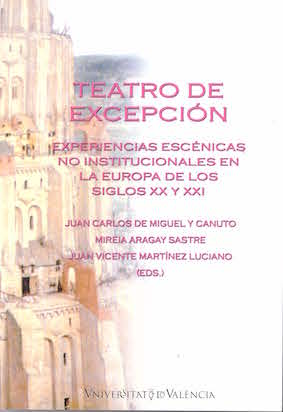The hispanic theme in Contemporary Russian Theatre
DOI:
https://doi.org/10.7203/qf-elit.v19i0.5211 Abstract
Abstract
Student theater of Lomonosov Moscow State University (MSU) was opened in 1756, today it is considered the oldest theater in Moscow. The new history of university theater begins in 1983, when Eugenio Slavutin became director. In 1999 Moscow Open Student Theatre MOST, what means ‘bridge’ in Russian, was inaugurated. The Hispanic theme is represented in several theater shows based on the works postmodernists of Viktor Korkia, like adventure comedy Invencible Armada, Hamlet.ru and “novel of chivalry in verse” Don Quixote and Sancho Panza on the island of Taganrog. The latter served as a philosophical basis for literary slapstick: Don Quixote. Rebooted at the hospital, a hypnotic and delirious dialogue between the knight and his faithful squire in a hospital room. The figure of Don Quixote seems a new Christ, a reincarnation of Hamlet, an eternal Master of Bulgakov doomed never survive in the human world.
Keywords: student theater; university theater; theater-studio; experimental theatre; professional theater.
 Downloads
Downloads
Downloads
Published
How to Cite
-
Abstract249
-
PDF (Español)284
Issue
Section
License
 Este obra está bajo una licencia de Creative Commons Reconocimiento-NoComercial-SinObraDerivada 4.0 Internacional.
Este obra está bajo una licencia de Creative Commons Reconocimiento-NoComercial-SinObraDerivada 4.0 Internacional.
Authors who publish with this journal agree to the following terms:
- Authors retain copyright and grant the journal right of first publication with the work simultaneously licensed under a Creative Commons Attribution License that allows others to share the work with an acknowledgement of the work's authorship and initial publication in this journal.
- Authors are able to enter into separate, additional contractual arrangements for the non-exclusive distribution of the journal's published version of the work (e.g., post it to an institutional repository or publish it in a book), with an acknowledgement of its initial publication in this journal.
- Authors are permitted and encouraged to post their work online (e.g., in institutional repositories or on their website) prior to and during the submission process, as it can lead to productive exchanges, as well as earlier and greater citation of published work (See The Effect of Open Access).



